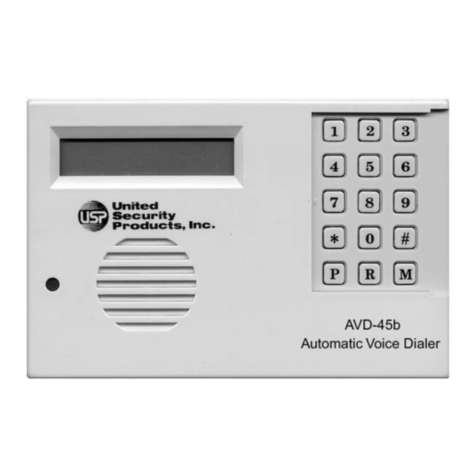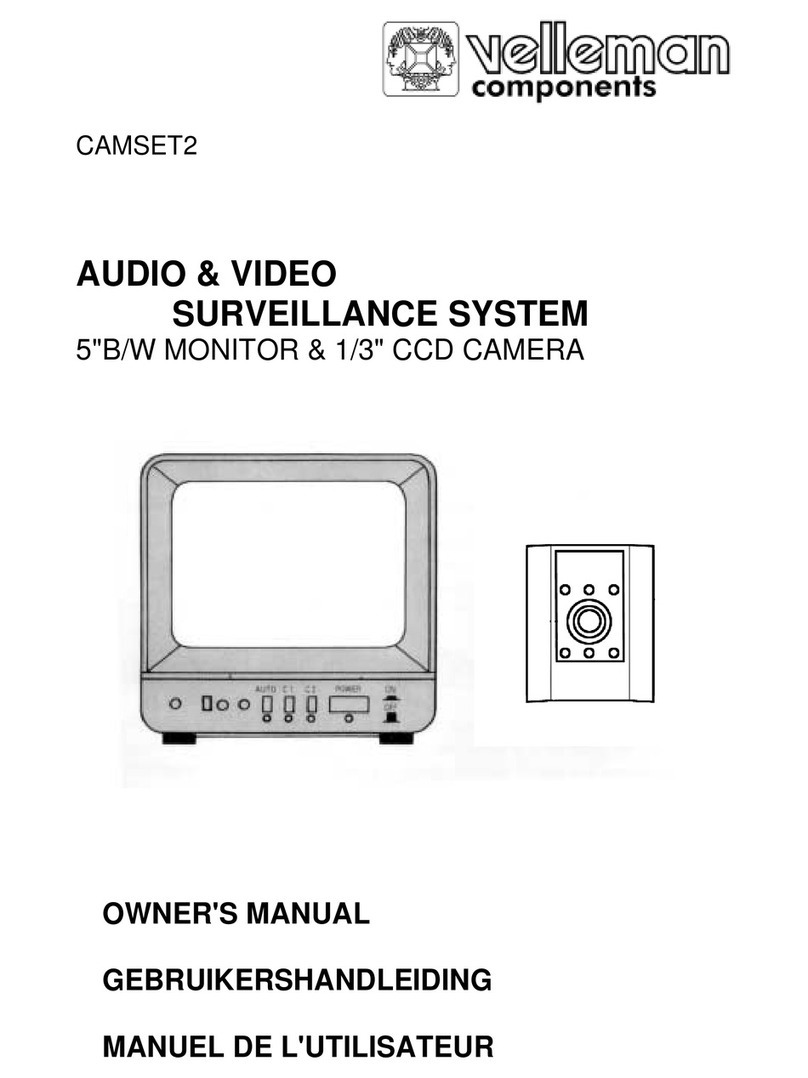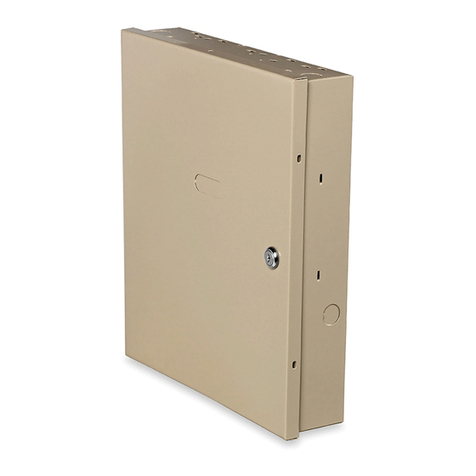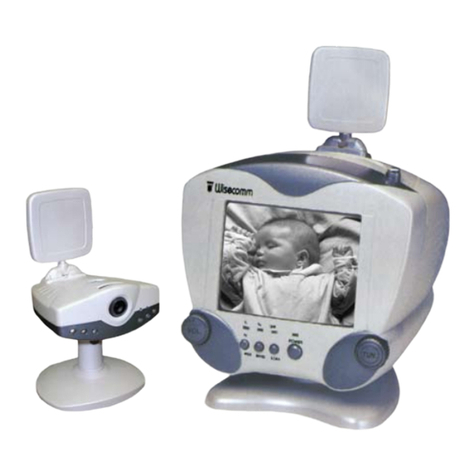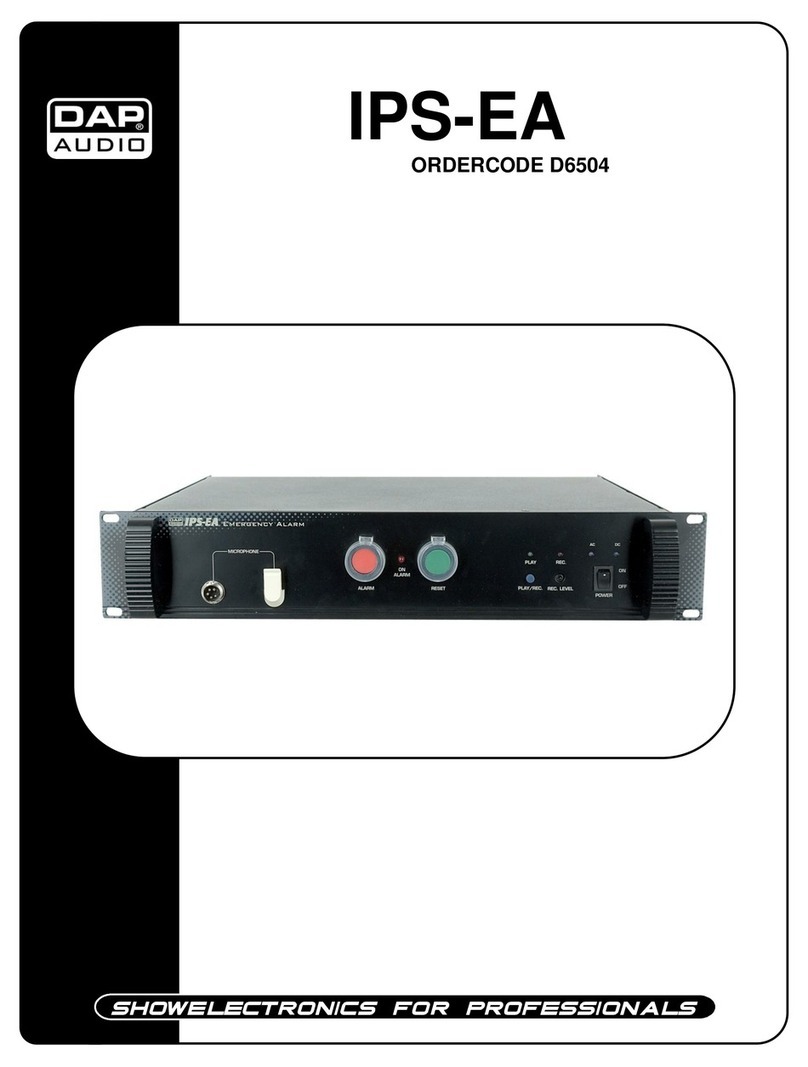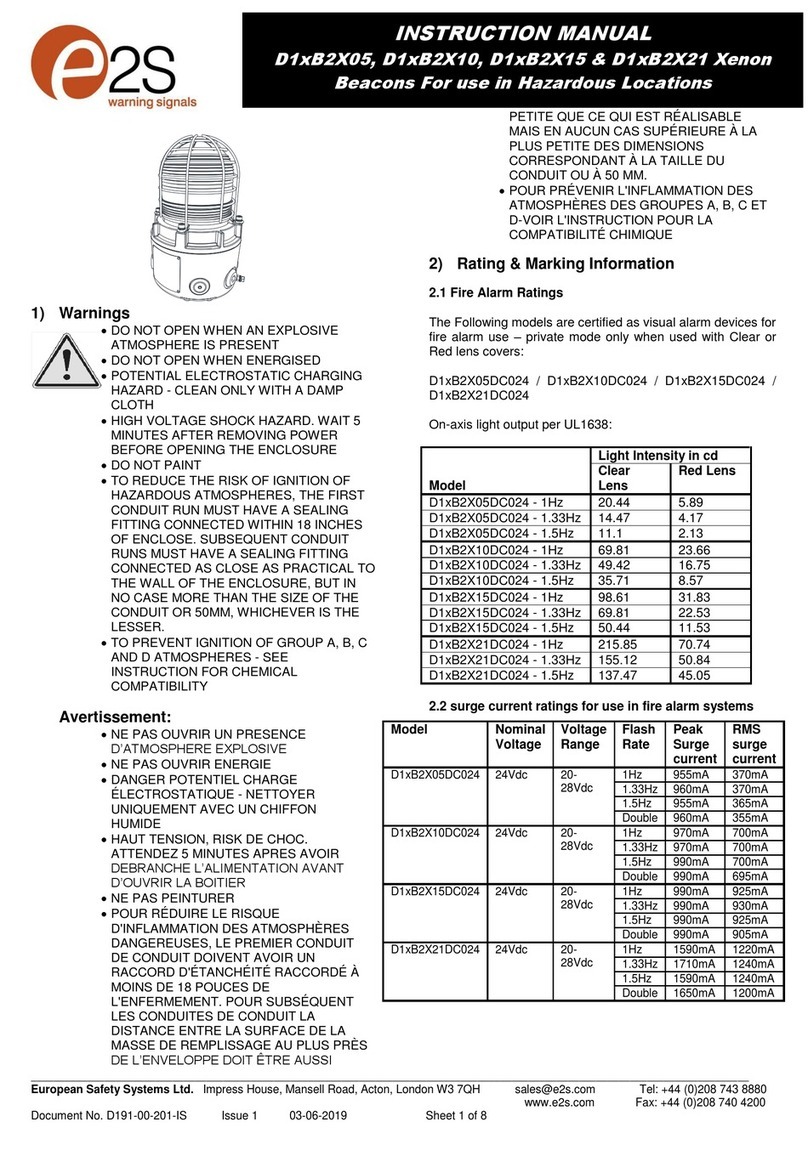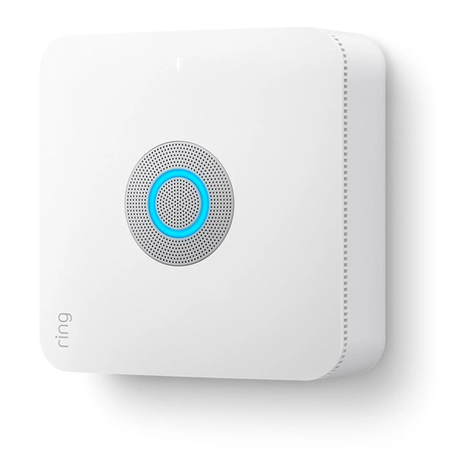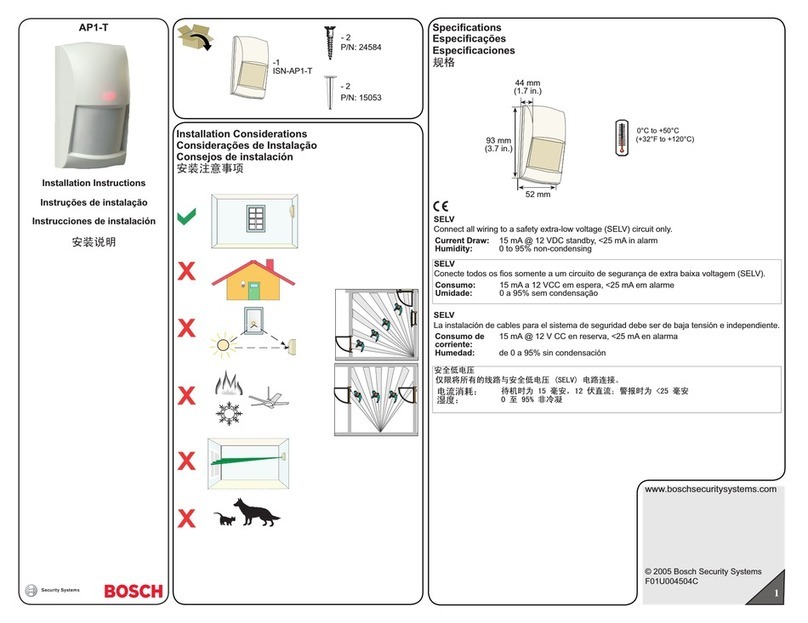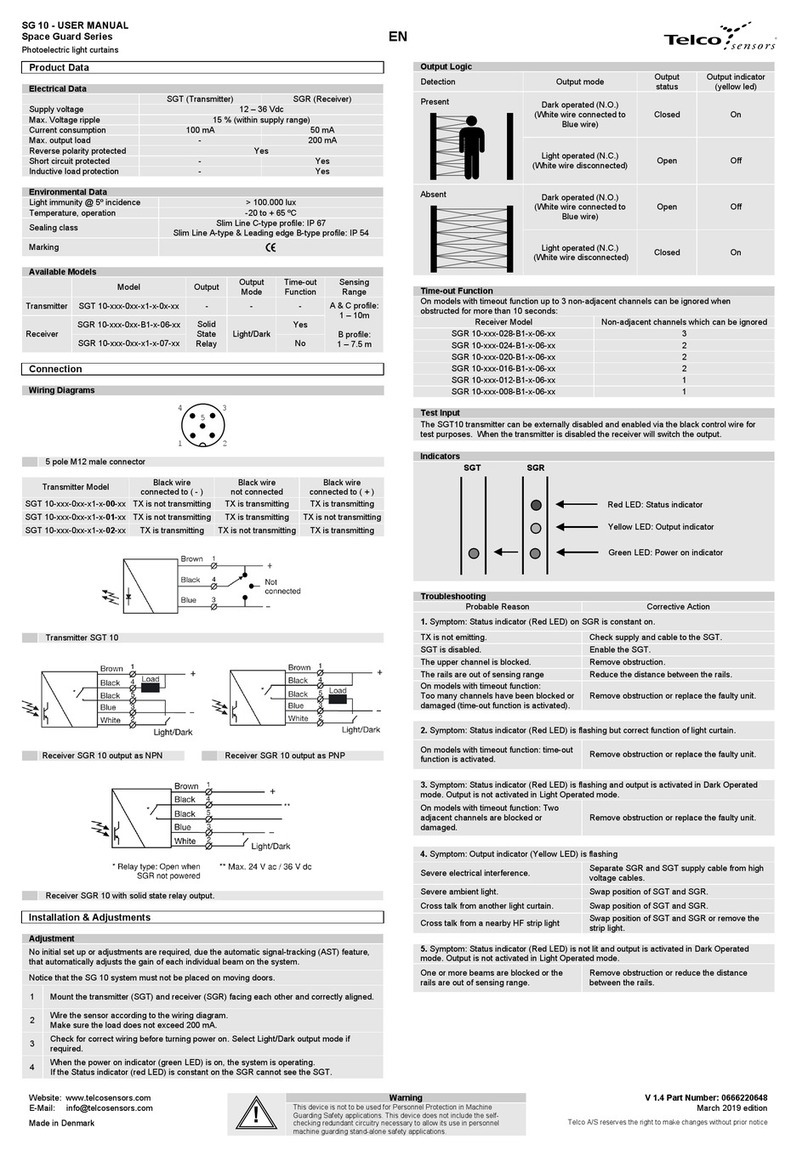PTI Falcon 2000 Operating instructions

The PTI Individual door alarm system consists of 4 major components. The Falcon, Multiplexor, Switch and Magnet
set and the wiring. Starting with the door, the switch and magnet form a closed loop when the magnet is close
enough to pull in the internal reed switch in the contact. This signal in the form of voltage is then sent to an input of
the multiplexer called the channel. This information is then transformed in the mux to RS-485 information and sent to
the Falcon Controller where it is determined if the door has been opened, closed or tampered with. This method
allows us to install hundreds of doors with only 3 RS-485 communication wires coming back to the Falcon controller
from the multiplexers (Muxes).
As simple as the system is it can become very confusing when trying to troubleshoot a door that is not reporting.
There can be many different elements that can cause a problem. This guide is designed to help you troubleshoot and
repair some of the most common problems with an individual door alarm system. It is necessary to have the proper
knowledge of reading a Digital Volt Meter (DVM) for this process. With a DVM you will be able to pinpoint any issues
that may occur.
The following is a list of possible problems and solutions. Please read everyone thoroughly to ensure the problem has
been identified.
Symptom:
When a door is opened the Falcon Controller does not register an alarm.
Possible Cause:
Previous alarms have not been cleared in the software.
Solution:
Clear Alarms
From Falcon Keypad:
Type the command *12#. The Falcon display should read “Clearing Alarms” .
From Falcon 2000 Software:
Click on the Icon that looks like a siren with a circle around it and a line through it. You should get a quick splash
screen that indicates “Clearing Alarms”.
Special Note: This feature was designed to keep the frequency of false alarms to a minimum and force the manager
to constantly monitor the system and interact with the alarms as they occur. There has been a feature added the 24
Function Falcon to help troubleshoot and eliminate this issue called Swinger Shutdown. It is advisable to go into the
Falcons *1000# function (if possible) and turn Swinger Shutdown OFF when testing. This will allow the door to report
an alarm and close each and every time the door is opened. Don’t forget to change it back on before leaving the
property if the manager wants it on. This is a very common mistake and is the easiest to fix.
If the Falcon is setup under the *1000# function with swinger shut down ON any alarm received EVER will only alarm
ONCE and not alarm again until Clear Alarms have been processed (this advanced feature is only available on the 24
function Falcons).
Possible Cause: Alarm System has been turned OFF
Solution: Turn on Alarm System
From Falcon Keypad:
Type *13#. The first prompt will display alarm system or . press the * on the Falcon keypad until it displays. Do this for
every option (Vacant, Remote comm., Tamper and Unknown Channels. This will ensure that all types of the alarms
are on including any unknown channels (see Falcon user manual for more information on these features).
From the Falcon 2000 Software:
Go to the Protected Site Setup, choose Falcon Settings and check the box for all alarms. Send changes to the Falcon
to take effect.
Special Note: It is possible that the Falcon alarm system has been turned off under the *1000# function. If so enter
this function and turn the alarm system ON (see Falcon manual for this procedure).
Possible Cause: Alarm for that particular unit is OFF.

Solution: Turn on that unit’s alarm
From Falcon Keypad:
Go into Feature *5# (Rent/Edit a Unit). Press the # key on the Falcon until you see the prompt “Unit Alarm”. Be sure
this is set to ON. The status can be toggled by pressing the * key on the Falcon until it displays ON then # to save the
setting.
From Falcon 2000 Software:
(this is only available on V-4.0 or higher) go to Edit a unit and make sure the check box for unit alarm is checked if it
is not then check that box and it will automatically turn on that unit’s alarm.
Hardware Failure:
Problem: Mux is NOT communicating.
Solution: Print a report to determine if Mux is communicating.
It is possible that a particular mux is not communication with the Falcon. If no doors on this mux report back to the
Falcon there is a possibility that the RS-485 communication have failed. SEE RS-485 Troubleshooting Section. The
Falcon 24 and Falcon 4.0 and higher are the only versions that have a report to indicate if the Mux is Online or not.
From the Falcon Keypad:
(version 24) go into Feature *8# (Print Reports). Press the * seven times until the display reads Status Report. Press
the # key to generate the report. There must be a dot matrix printer installed on the parallel port of the Falcon for this
report to print. Check the report to determine if the mux that is wired to the door input that does not register is ON
LINE. If it is not repair the mux. The door cannot report to the Falcon if the mux is not communicating.
From Falcon 2000 Software:
(version 4.0 or higher) Click on the Large printer icon at the left of the screen and choose Remote Online Status. You
can view this report from the screen or print it to a printer connected to the F-2000 CPU. Check the report to
determine if the mux that is wired to the door input that does not register is ON LINE. If it is not repair the mux. The
door cannot report to the Falcon if the mux is not communicating.
Special Note: If you have an earlier version Falcon it is possible to remove the RS-485 cable from the Falcon for
approx 5 minutes. If there is a printer connected to the Falcon it will start to print Communications Off followed by the
remote number on any of the Muxes that are communicating at the time. When reconnected it will print
Communications ON followed by the remote number on the remotes that are communicating.
Identifying an OPEN DOOR problem and repairing it.
An open door that will not close can be caused by many different problems and can be difficult to locate. You will
need a (Digital Volt Meter) DVM to properly locate the problem. If a door status does not change from OPEN or
ALARM to CLOSED and the software is configured properly and the mux is communicating, then it will be necessary
to open the mux box and scan the door inputs for open doors. This process is extremely helpful and will save you a
lot of time in troubleshooting. An OPEN door is the most common type of failure and can be caused by a misaligned
contact and magnet, a missing contact or magnet, an “open” contact or a broken wire. REMEMBER the mux is
relatively “dumb” and all it does is send a signal to the Falcon if the door is open or closed based upon a voltage.
PTI’s standard PMUX-xx all can operate between 12 and 18 V AC or DC but the output voltage to the doors channels
is ALWAYS 5 volts DC. Place your volt meter in the DC position and select a scale that will display in Tenths or
hundredths if possible (example 5.00 V DC). Place the negative lead on a ground on the mux. This will be any of the
last 4 door inputs on the mux. Now scan each and every wire with the positive lead. You should register 0.00 V DC
on all doors that are closed and working properly and no less than 4.9 on any open doors.

Problem: Door contact is NOT Aligned
Solution: Realign door contact set
Gain access to the unit and make sure there is no more that ½” Gap between the magnet and the switch. It may be
necessary to move the magnet, or contact. This could be a simple as bending the bracket that holds the contact
closer to the magnet or as complex as remounting one or both items.
I
Special Note: If the proper magnet and switch were used they are rated for a 2” gap. Chances are that the magnet is
mounted on a metal surface. Over time the magnet will lose some of the “pull” it once had causing the gap to not be
as tolerant. This is the reason for recommending a tighter gap between the magnet and the switch. NEVER USE A
STANDARD MAGNET AND SWITCH SET THAT USES A 1” GAP OR LESS WHEN REPLACING THE CONTACT.
Problem: Door Magnet or Contact Missing
Solution: Replace Door Magnet or Contact
A door contact or magnet if not installed properly can fall off over time. Gain access to the unit and inspect to make
sure there is both a contact and a magnet present on the door. If not replace with a proper replacement.
Problem: Door Wire between Mux and contact is broken
Solution: Determine where the break is and either repair or replace
Installations are always subjected to wiring breaks in the door wiring. It can be very difficult to find exactly where
these breaks are. It is possible that the break is at the splice point inside of the unit not working but not always the
case. The best way to determine if a wire is broken is to gain access to the unit. Disconnect the 2-conductor wire that
leads to the door switch. You may be able to just unscrew the connection or you may have to cut the wire lead. Once
the 2 conductors are exposed measure the DC voltage across the 2 wires. You should have close to 5V DC. Polarity
does not matter. If you do not have 5V DC connect on lead of the meter to a good electrical ground (sometimes you
can use the building) and the other to each wire consecutively if voltage is present on one of the wires, then the
ground wire is broken somewhere between that door and the mux. If there is no voltage on either wire, then the Door
Channel wire is broken between that door and the mux. It may be possible to just use a new wire if there are any
spares or you may have to re-pull the wire.
NOTE: Be sure to check the voltages without the switch connected to the wire and power to the mux otherwise the
test could be invalid.
Problem: Door Contact has failed open.
Solution: Replace Door Contact
The door contact could have experienced a lightning strike or other surge that has caused it to fail by opening up. The
contact can be checked by not removing it from the system first but by slightly stripping the wire back on each wire to
expose part of the copper wire core. Once the actual conductors are exposed you can place your meter on each wire
and measure for voltage. If 4.9 to 5V DC is present you can then place a magnet close to the switch. If the voltage
goes down to 0 then the contact is working properly. If it does not. Replace the Contact.
Identifying a Closed Door Contact and Repairing it.
Problem: Door Contact has failed Closed.
Solution: Replace Door Contact

The door contact could have experienced a lightning strike or other surge that has caused it to fail by shorting closed.
This is the most difficult problem to identify. When scanning a mux for a closed door will always report 0 volts across
it when the door is closed. If the you have a door that is open but still no activity and all the above steps have been
followed it could be possible that the contact is welded together and is not opening when the magnet is removed. You
will need to gain access to the unit to properly test the contact. Remove or cut the wire going to the contact and
measure voltage across it. If voltage is present, then place your DVM into the Ohms mode and measure the
resistance across the switch with no magnet near the switch. If it reads anything other than an open the contact is
shorted and will need to be replaced.
Identifying a bad connection on a Door:
A door that has a bad connection to the door or a bad reed switch in the contact can cause a very intermittent
response and can be dependent upon temperature changes or other climatic changes. It is relatively easy to identify
these problem doors. Close ALL doors on the property. Scan the mux with your volt meter on all inputs. You should
either measure 4.9V to 5V DC or 0 V DC across all inputs. If you read for example 2.5 or 3 Volts across an input, it is
likely that there is a bad connection to that door or a bad reed switch. The mux will not know if that door is opened or
closed and will float it between states and give constant reports of OPEN/CLOSED or ALARM/CLOSED. Many times,
this problem is in the unit at the splice where the trunk wire meets the 2-conductor switch wire. Check these splices
for the proper connection. If they are ok, then replace the switch.
Table of contents
Other PTI Security System manuals
Popular Security System manuals by other brands
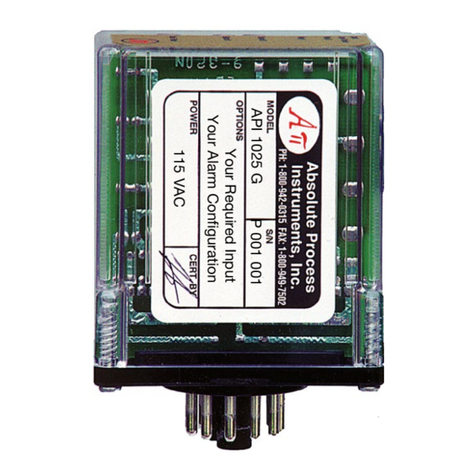
API
API 1005 G quick start guide
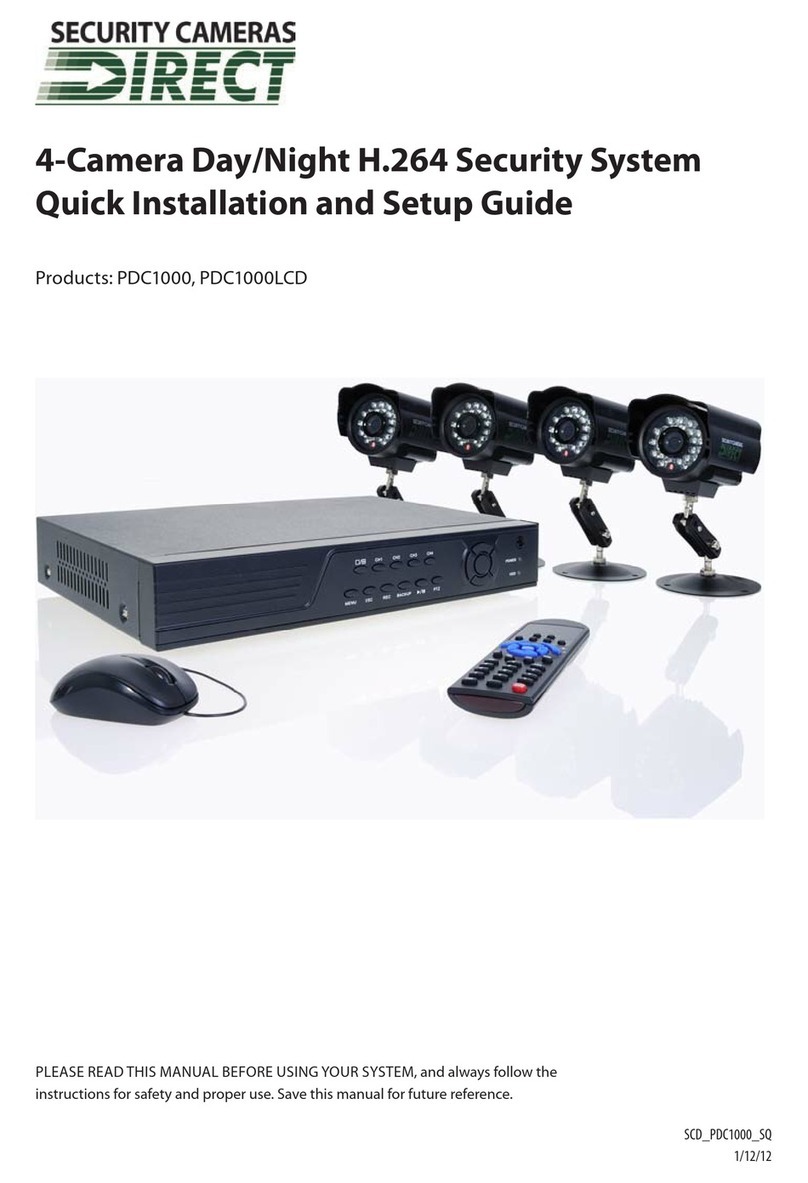
Security Cameras Direct
Security Cameras Direct PDC1000 Quick installation and setup guide
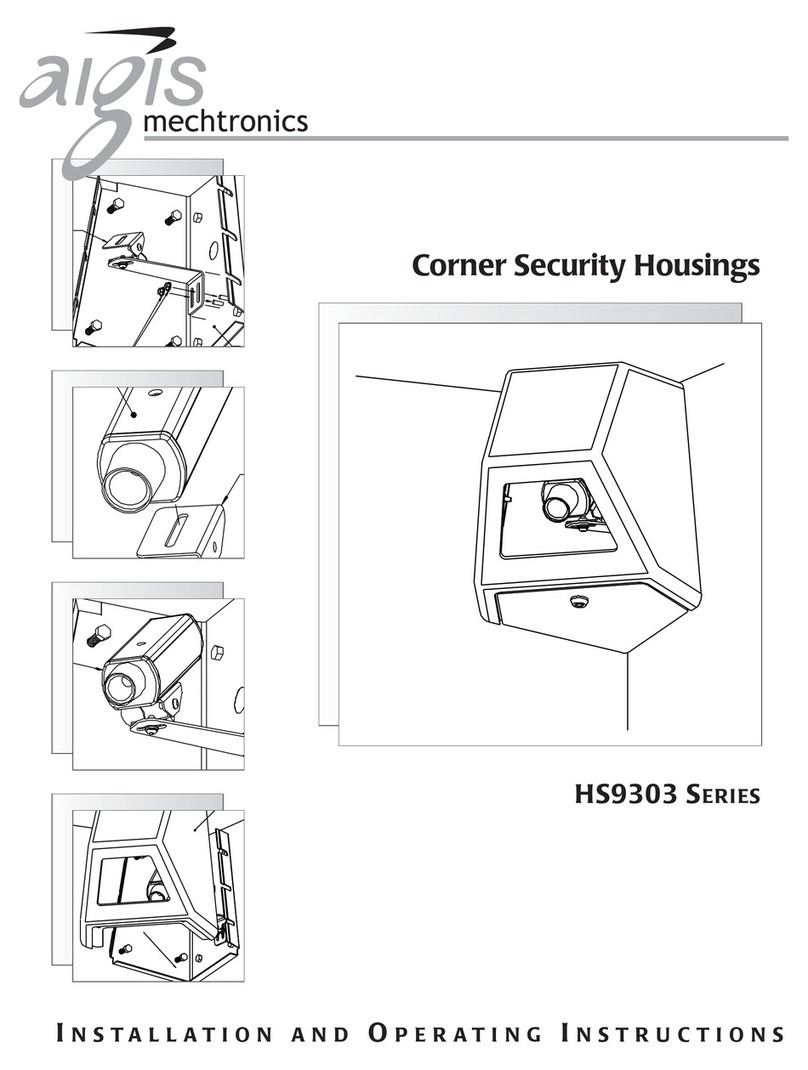
Aigis Mechtronics
Aigis Mechtronics HS9303 Series Installation and operating instructions
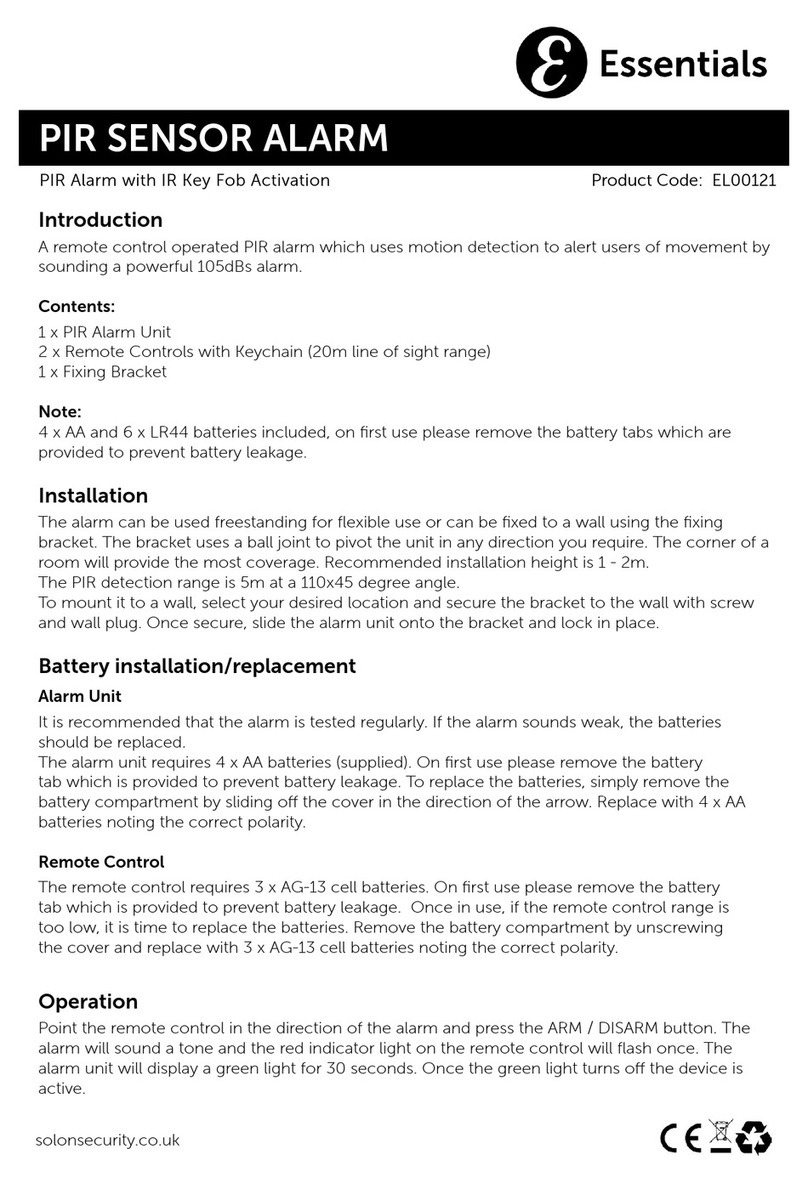
Essentials
Essentials EL00121 quick guide

Mini Gadgets
Mini Gadgets Bush baby BB4KNEFuseBox user manual
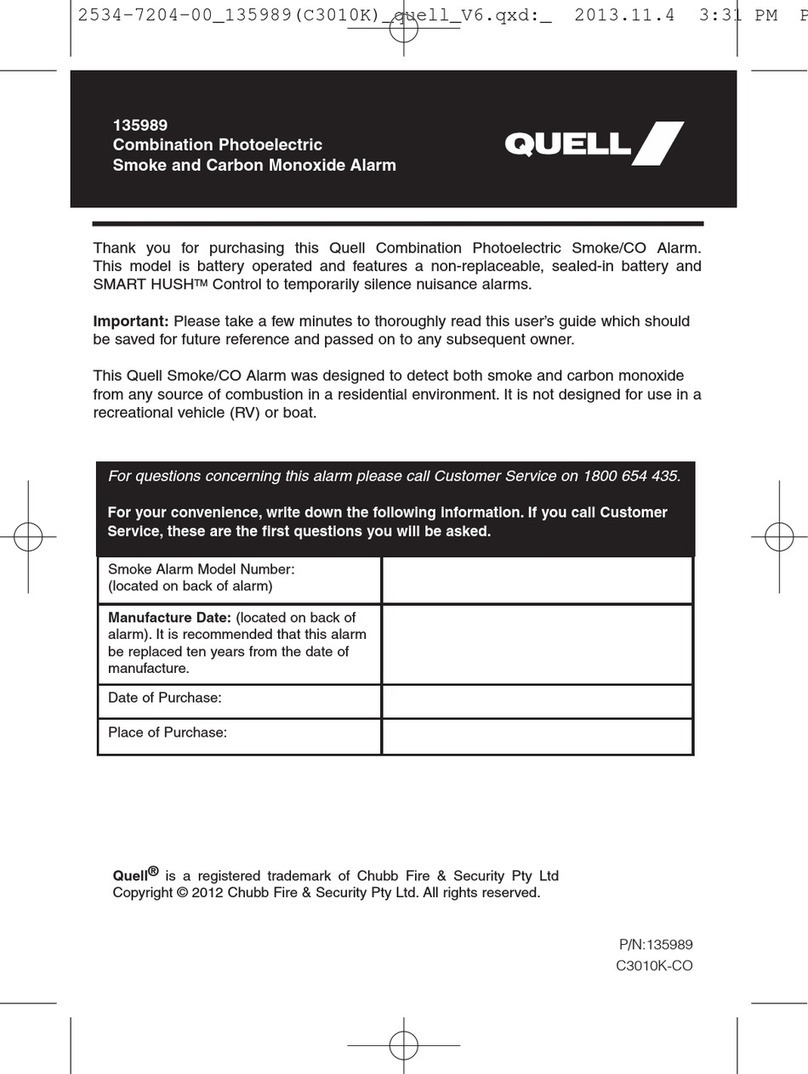
Quell
Quell 135989 manual

